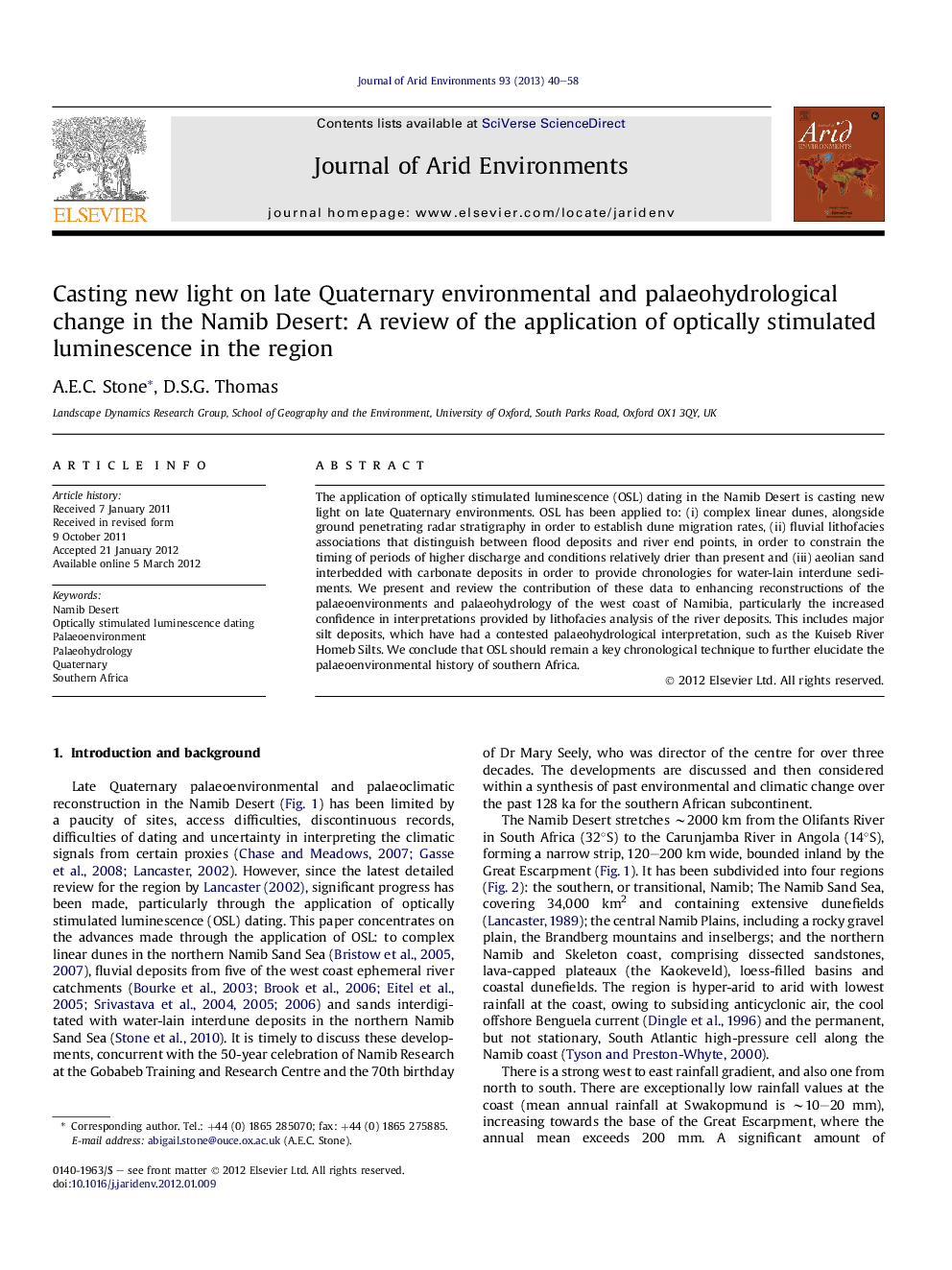| کد مقاله | کد نشریه | سال انتشار | مقاله انگلیسی | نسخه تمام متن |
|---|---|---|---|---|
| 4393105 | 1618264 | 2013 | 19 صفحه PDF | دانلود رایگان |

The application of optically stimulated luminescence (OSL) dating in the Namib Desert is casting new light on late Quaternary environments. OSL has been applied to: (i) complex linear dunes, alongside ground penetrating radar stratigraphy in order to establish dune migration rates, (ii) fluvial lithofacies associations that distinguish between flood deposits and river end points, in order to constrain the timing of periods of higher discharge and conditions relatively drier than present and (iii) aeolian sand interbedded with carbonate deposits in order to provide chronologies for water-lain interdune sediments. We present and review the contribution of these data to enhancing reconstructions of the palaeoenvironments and palaeohydrology of the west coast of Namibia, particularly the increased confidence in interpretations provided by lithofacies analysis of the river deposits. This includes major silt deposits, which have had a contested palaeohydrological interpretation, such as the Kuiseb River Homeb Silts. We conclude that OSL should remain a key chronological technique to further elucidate the palaeoenvironmental history of southern Africa.
► We review vital contribution of luminescence dating in the Namib Desert.
► Luminescence dating has improved chronological control for both fluvial and aeolian deposits.
► These developments represent new records and revisions to radiocarbon chronologies.
► We consider the consequences of the new chronologies for the individual sites concerned.
► Key points of contrast to the existing syntheses of Quaternary palaeoenvironments are made.
Journal: Journal of Arid Environments - Volume 93, June 2013, Pages 40–58